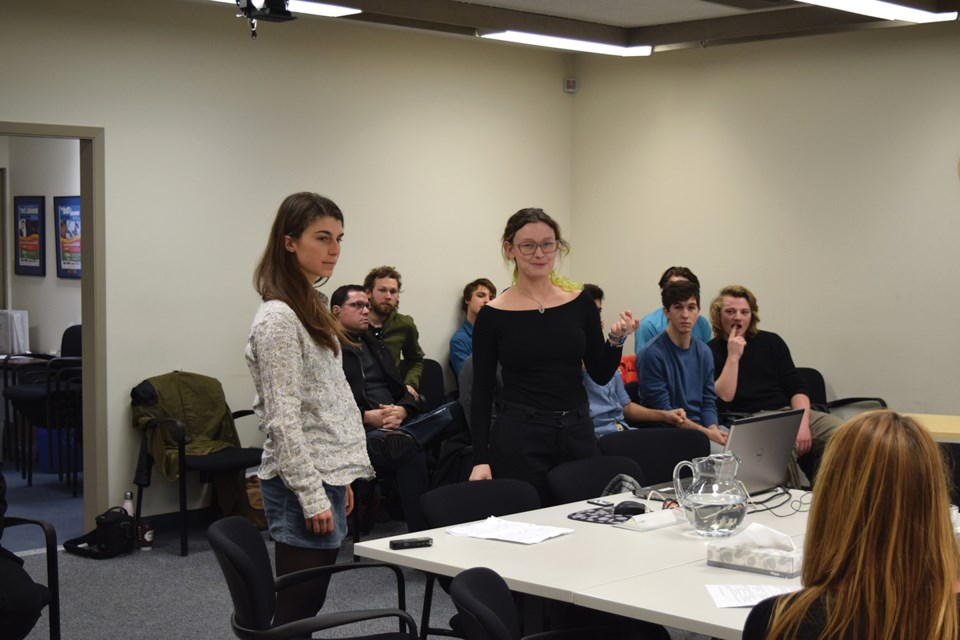A class of Quest University students put their minds to Squamish’s housing affordability problem and came up with some solutions.
Students from professor Leanne Roderick’s political economy class presented their findings to Mayor Patricia Heintzman, Coun. Susan Chapelle and district planners on Feb. 7.
The presentation was divided into three areas of focus: data collection, the feasibility of a housing authority in Squamish and creating tiny home communities.
Amassing data is essential to tackling the housing issues in Squamish, according to student presenter Julian Lafaye.
“When we spoke to all of our sources the biggest thing was ‘We don’t really know that,’ or ‘We can’t really say that for certain,’” Lafaye said.
Without data to understand what is actually happening in terms of housing it’s difficult to make the smartest decisions around how to deal with it, Lafaye noted.
The students proposed collecting data with surveys of employers and realtors. An employer survey would help determine the demographics of local businesses and if full staffing levels were achieved, for example.
A survey of realtors could help determine why people are buying or selling, where people work and where they move.
The students also proposed creating an information-sharing network. Results from the surveys would be uploaded and shared. Other information relevant to housing could also be shared, the students suggested.
With enough data, decision making at the district level would be more informed, the students argued.
Setting up an independent housing authority makes more sense than hiring a housing coordinator, according to the students.
Council has committed to a new contract coordinator in the proposed 2017 budget.
“An independent housing authority is a more efficient solution,” said student Hogan Ingram, adding more people can work on the issue within a housing authority, rather than just the one person hired as a coordinator. A housing authority oversees the development and management of affordable housing options.
The Whistler Housing Authority was established in that community in 1997.
The Squamish housing authority would be independent, similar to a Crown corporation, and this could help de-politicize the housing issue, Hogan said.
Chapelle agreed with the students.
“The model is available in other areas,” she noted. The money collected from developers in community amenity contributions could be used to start a housing authority, she said, rather than to pay for the housing coordinator.
Heintzman said the role of the housing coordinator hasn’t yet been finalized and could possibly be to help set up a housing authority, though she didn’t seem convinced that would be the best option for Squamish.
“With the Whistler Housing Authority it took years to become flush and have a ton of money in the bank,” she said,
“That is always a bit of the trepidation of starting one of these things, are you going to create a whole bureaucracy and in two years from now the market is flat and there’s no housing issues?”
The students also argued that tiny homes are an efficient use of land, customizable, sustainable and create a sense of community. They recognized that Squamish has zoning considerations and topography issues, but said those could be overcome.
“Because of Squamish’s location in the floodplain… we are proposing solid foundations that these houses are built on and we also proposed that they are built on municipality owned land,” said student Tara Warkentin, adding the tiny home rents would be able to be kept lower on district-owned land.
“A local developer, preferably, would be hired by the municipality to build units that comply with the building code and the flood plain restrictions and all the units would be available to rent and would be built to a variety of sizes to accommodate diverse residents,” Warkentin said.
After the presentations, Heintzman said the students’ ideas were well thought out and she welcomed their input.




